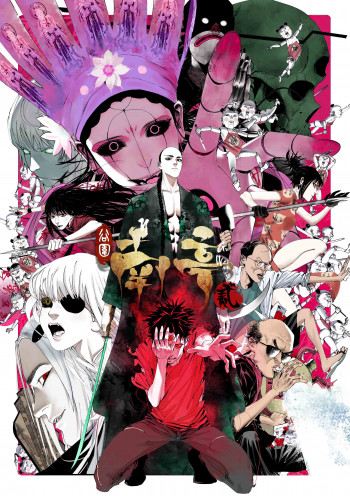
Six Days in Bombay
by Alka Joshi
When renowned painter Mira Novak arrives at Wadia hospital in Bombay after a miscarriage, she’s expected to make a quick recovery, and her nurse, Sona, is excited to learn more about the vivacious artist who shares her half-Indian identity. Sona, yearning for a larger life, finds herself carried away by Mira’s stories of her travels and exploits and is shocked by accounts of the many lovers the painter has left scattered throughout Europe. When Mira dies quite suddenly and mysteriously, Sona falls under suspicion, and her quiet life is upended.
The key to proving Sona’s innocence may lie in a cryptic note and four paintings Mira left in her care, sending the young woman on a mission to visit the painter’s former friends and lovers across a tumultuous Europe teetering toward war. On the precipice of discovering her own identity, Sona learns that the painter’s charming facade hid a far more complicated, troubled soul.
In her first stand-alone novel since her bestselling debut, The Henna Artist, Alka Joshi uses the life of painter Amrita Sher-Gil, the “Frida Kahlo of India,” as inspiration for the story’s beginning to explore how far we’ll travel to determine where we truly belong.
.
Read
Six Days in Bombay on http://kissnovel.net
Martial Peak Reviews
Alka Joshi's Six Days in Bombay is a captivating exploration of identity, art, and the intricate tapestry of human relationships. Drawing inspiration from the life of Amrita Sher-Gil, often referred to as the "Frida Kahlo of India," Joshi crafts a narrative that is both a mystery and a journey of self-discovery. The novel is set against the backdrop of a pre-war Europe and a bustling Bombay, providing a rich and vibrant setting that enhances the story's depth.
The story begins with Mira Novak, a renowned painter, who finds herself in Wadia Hospital in Bombay following a miscarriage. Her nurse, Sona, is immediately drawn to Mira's vivacious personality and the shared bond of their half-Indian heritage. Sona's life, which has been marked by quietude and routine, is suddenly infused with the excitement of Mira's tales of travel and romance. However, the narrative takes a dark turn when Mira dies under mysterious circumstances, leaving Sona as a prime suspect.
Joshi's portrayal of Sona is particularly compelling. As a character, Sona embodies the universal quest for identity and belonging. Her journey from a quiet nurse to a woman on a mission to clear her name is both thrilling and poignant. Through Sona, Joshi explores themes of self-discovery and the lengths one will go to uncover the truth. The cryptic note and four paintings left by Mira serve as catalysts for Sona's transformation, propelling her into a world of intrigue and danger.
The novel's structure is reminiscent of a classic mystery, with Sona's investigation leading her across Europe to meet Mira's former friends and lovers. Each encounter reveals more about Mira's complex character, peeling back the layers of her charming facade to expose a troubled soul. Joshi skillfully uses these interactions to delve into themes of love, betrayal, and the masks people wear to hide their true selves.
One of the standout aspects of Six Days in Bombay is Joshi's ability to create vivid and immersive settings. Her descriptions of Bombay are lush and evocative, capturing the city's vibrant energy and cultural diversity. Similarly, her portrayal of Europe on the brink of war adds a sense of urgency and tension to the narrative. The contrast between these two settings highlights the novel's exploration of identity and belonging, as Sona navigates different worlds in her quest for truth.
Joshi's writing is both lyrical and precise, with a keen eye for detail that brings the story to life. Her characters are well-developed and multi-dimensional, each with their own motivations and secrets. The dynamic between Sona and Mira is particularly well-crafted, with their shared heritage serving as both a bond and a source of tension. Through their relationship, Joshi examines the complexities of identity and the ways in which our past shapes our present.
In comparison to Joshi's debut novel, The Henna Artist, Six Days in Bombay stands out as a more introspective and character-driven narrative. While The Henna Artist focused on themes of independence and resilience, this novel delves deeper into the psyche of its characters, exploring the nuances of identity and the search for belonging. Fans of authors like Jhumpa Lahiri and Arundhati Roy will appreciate Joshi's ability to weave intricate narratives that are both emotionally resonant and thought-provoking.
Overall, Six Days in Bombay is a masterful blend of mystery, drama, and introspection. Joshi's exploration of identity and belonging is both timely and timeless, resonating with readers on a deeply personal level. The novel's rich settings, complex characters, and compelling narrative make it a must-read for anyone interested in stories that challenge and inspire. As Sona's journey unfolds, readers are reminded of the power of art, the importance of self-discovery, and the enduring quest to find one's place in the world.
In conclusion, Alka Joshi has crafted a novel that is as beautiful as it is profound. Six Days in Bombay is a testament to her skill as a storyteller and her ability to capture the complexities of the human experience. It is a book that will linger in the minds of readers long after the final page is turned, offering insights into the nature of identity, the power of art, and the enduring search for belonging.
























Reviews 0
Post a Reviews: